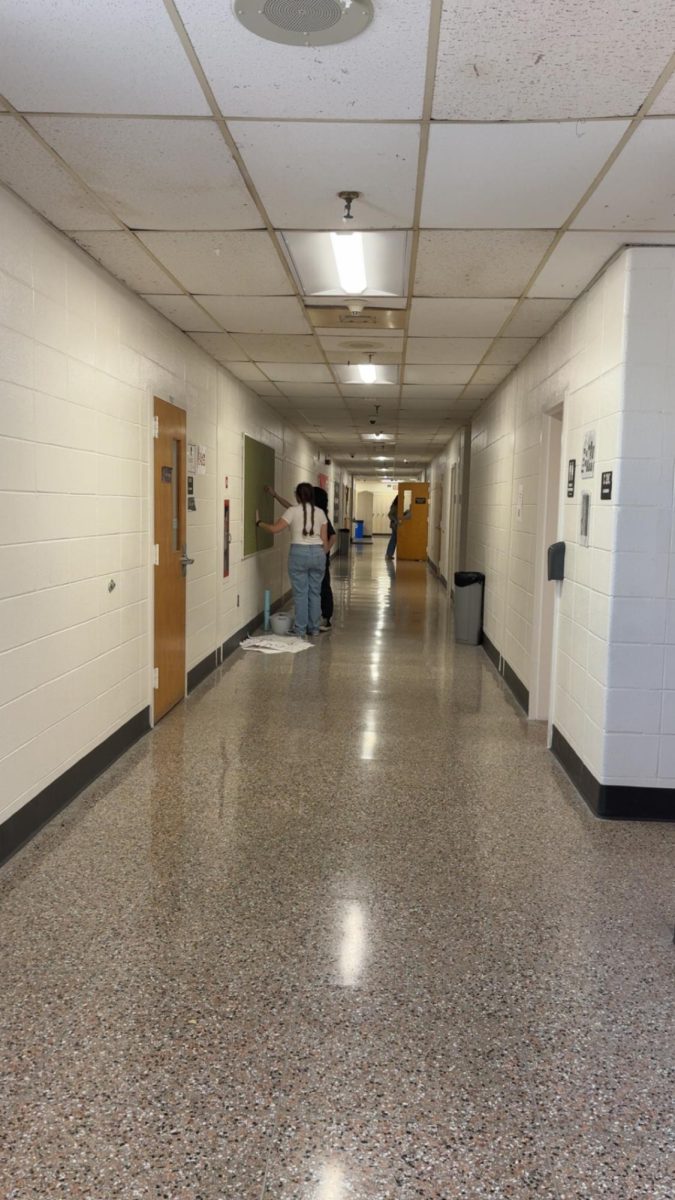In the past couple of weeks, new anti-vaping posters have been popping up around the school. But why now? According to Ms. Penna, the answer lies in hygiene, a miscommunication, and desensitization.
Ms. Penna’s job as the Student Assistance Counselor/Crisis Counselor started with a focus on substance use. Of course, she helps with much more than just substance-related problems, but when federal or state programs like SAMHSA send posters relating to student substance use or mental health services, she’s the one who receives them and delegates where they’ll go.
“Well, [the old posters] have been in the bathrooms for 5 or 6 years now. I think anything that’s been in a bathroom for a number of years should get refreshed, just from a sanitary perspective…Let’s put something clean and fresh in.”
But, as you may have noticed, the posters didn’t end up in the bathroom.
“You get a pile of posters and it’s like, ooh, how about we stick some here… students are helping put them in rather than me walking into all the bathrooms and all the stalls and doing it, I get students who identify [with] the boys bathrooms, students who identify [with] the girl bathroom to do that.”
So essentially, the reason we saw a bunch of new posters in the hallways is to make sure we have non-germ-infested mental health resources, and a simple misunderstanding led to their misplacement. Aside from hygienic purposes, we also received new posters because they carry an important message that was previously hiding in plain sight.
“If we see something every day, we stop actually seeing it…So when you introduce something new to the environment, it catches the eye and it helps with the messaging. You know, the posters have important messaging on them, but if you’re seeing them all the time, you’re not paying attention. So when we put something new into the environment, it catches more attention.”
But why is it so important that they be in the bathrooms?
“When it comes to substance and crisis information, kids especially–people in general, but kids especially–are very hesitant to read it and get help when they feel like they’re being watched. If they stand in the hall too long next to something, it feels like people are going to think they have a problem or something. So they don’t want to get targeted that way…and when people are in mental health crisis and they’re panicking, if they don’t go to their safe person, whether that’s a counselor or a nurse, a good spot to go look for [the person in crisis] is the bathroom, hiding in a stall or hiding somewhere. So we make sure we have helpline numbers for different types of things in the bathroom.”

















